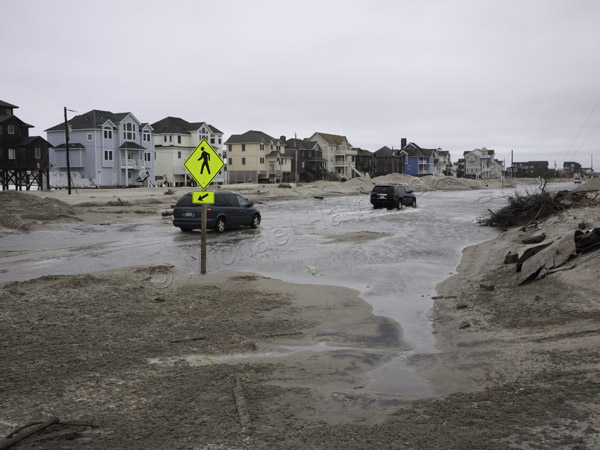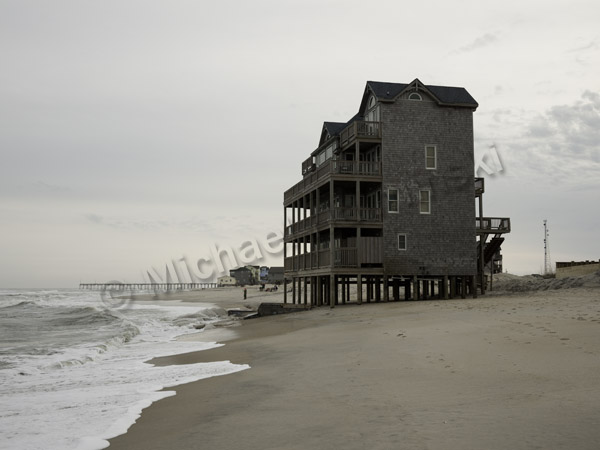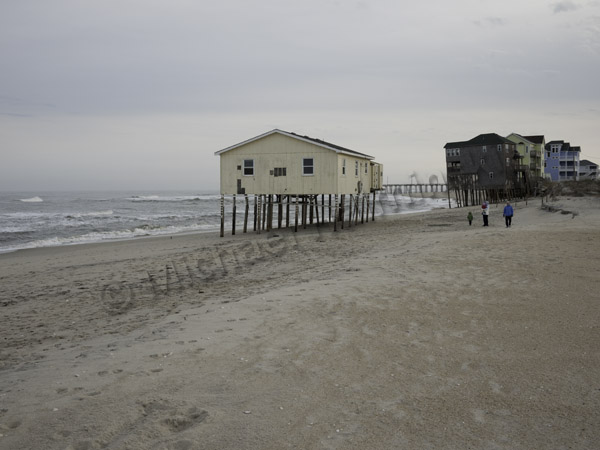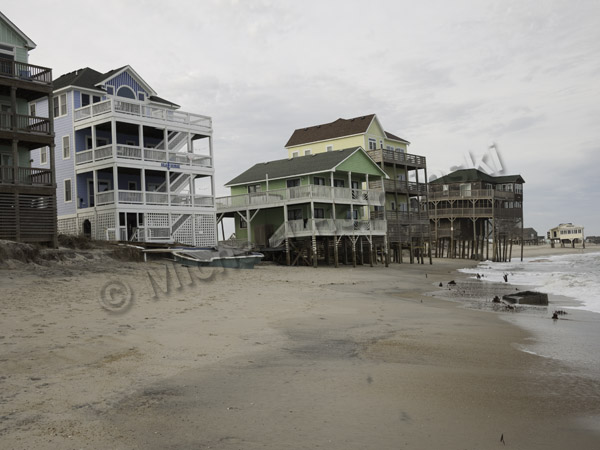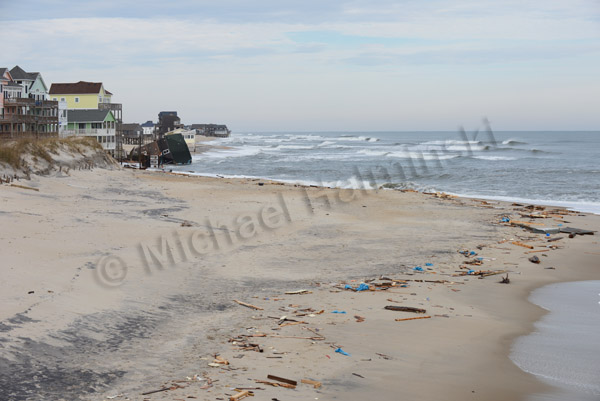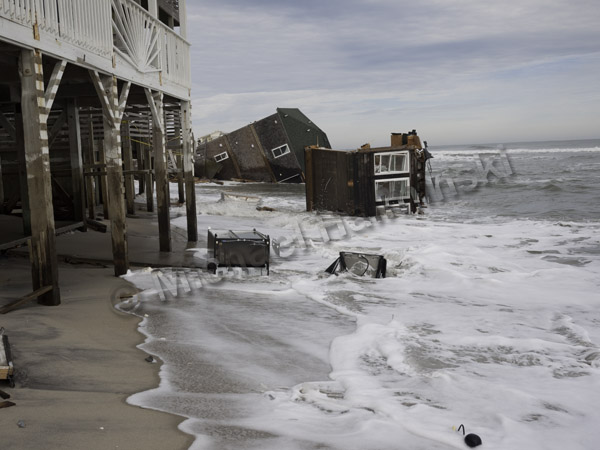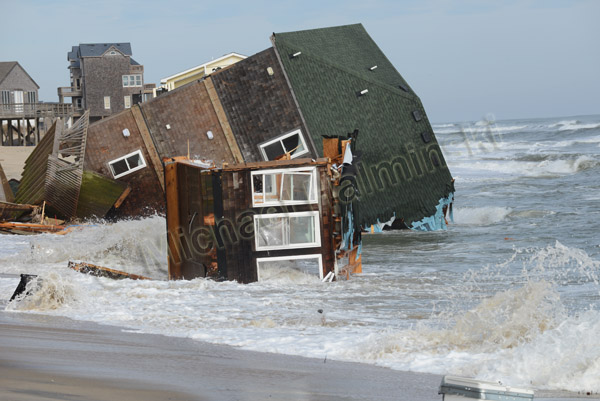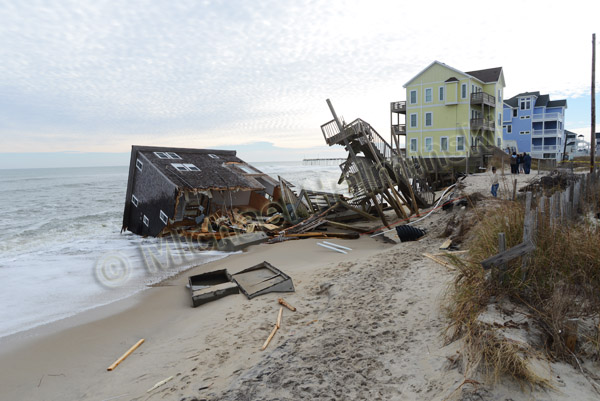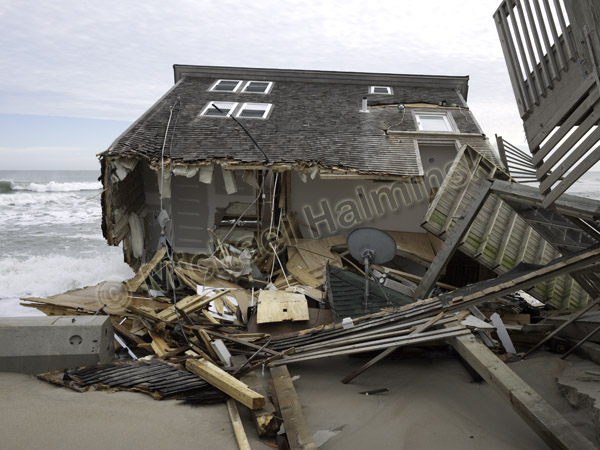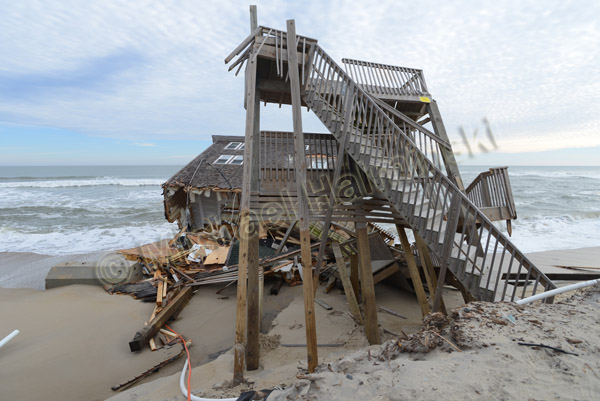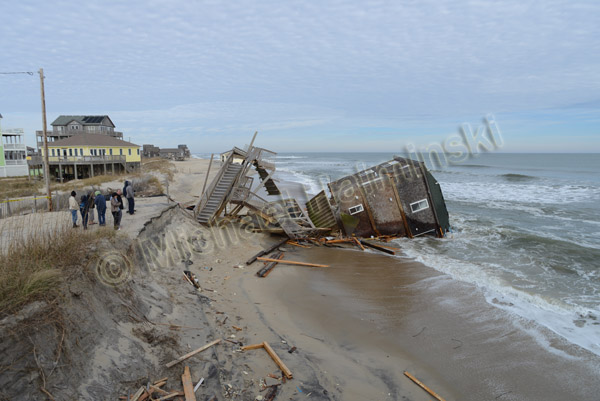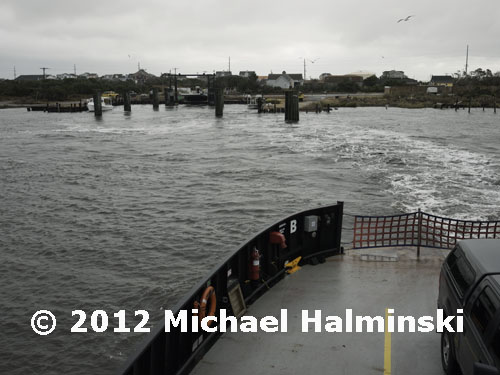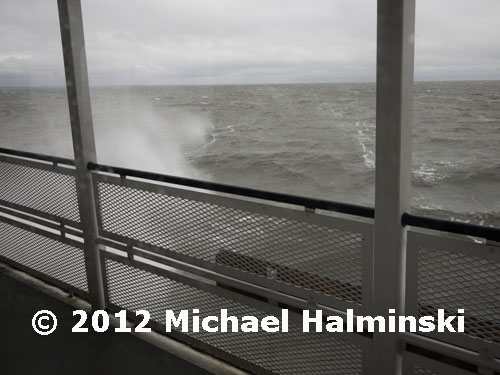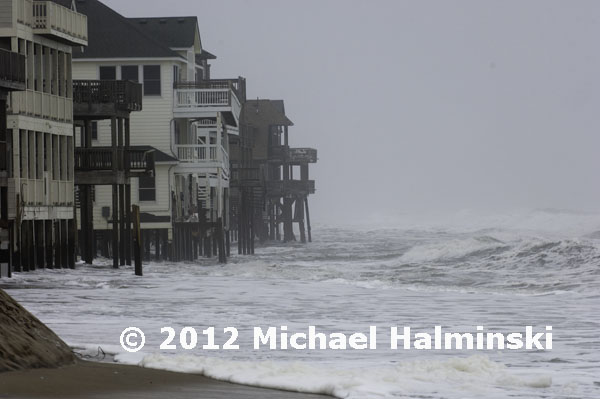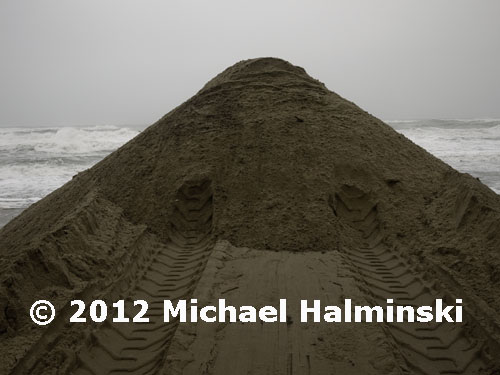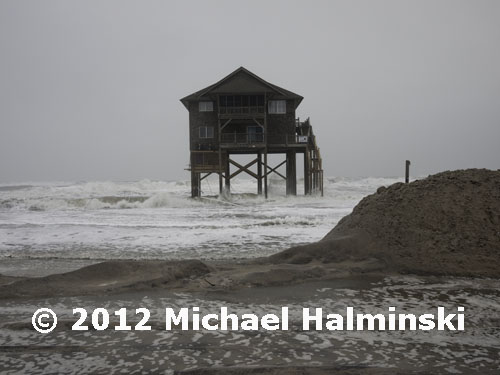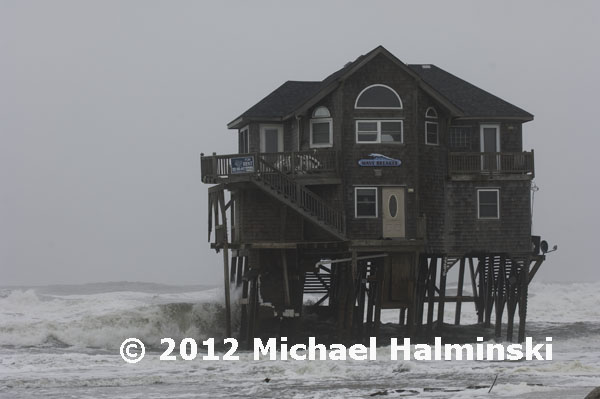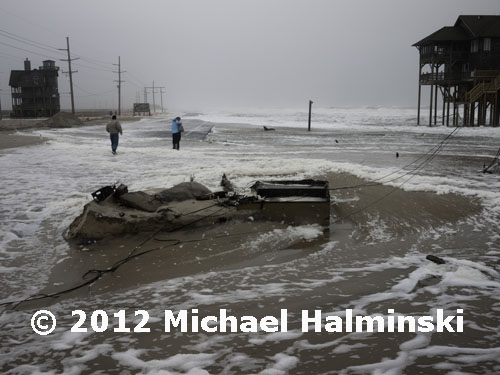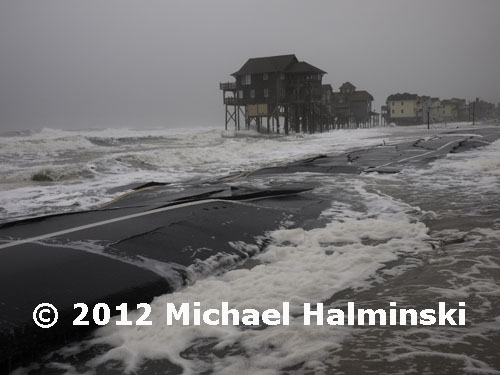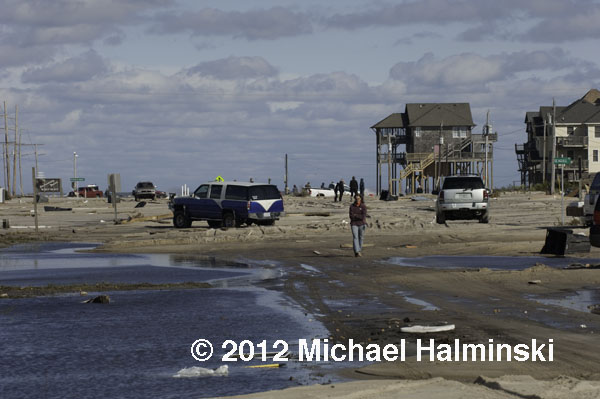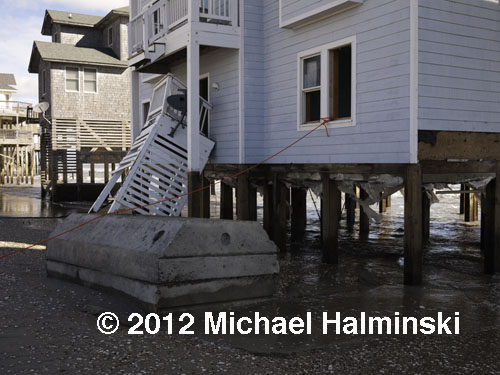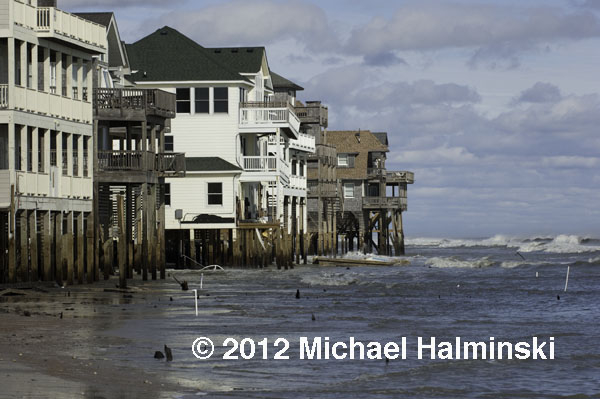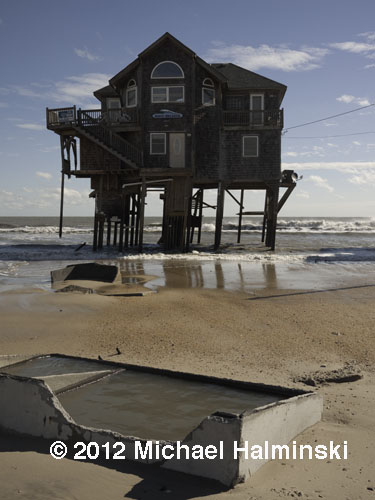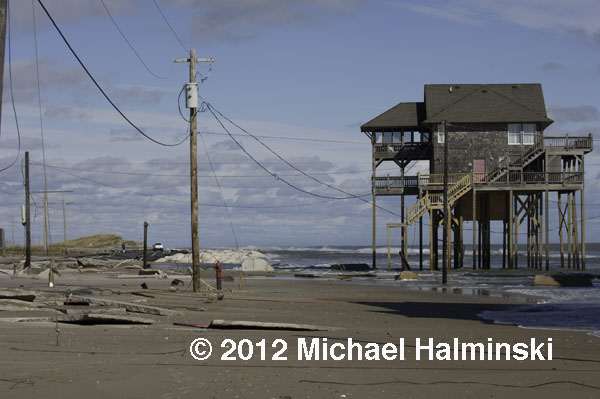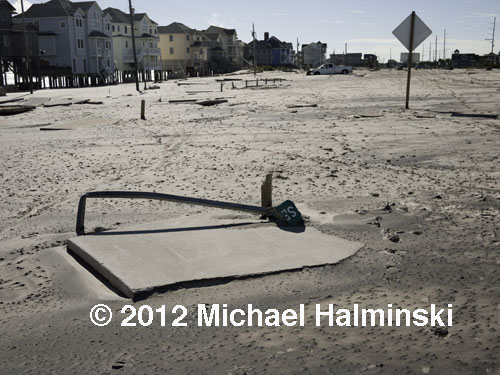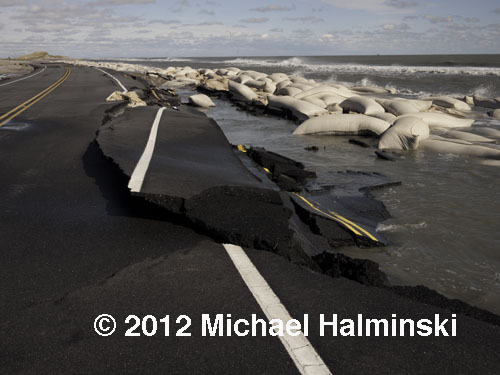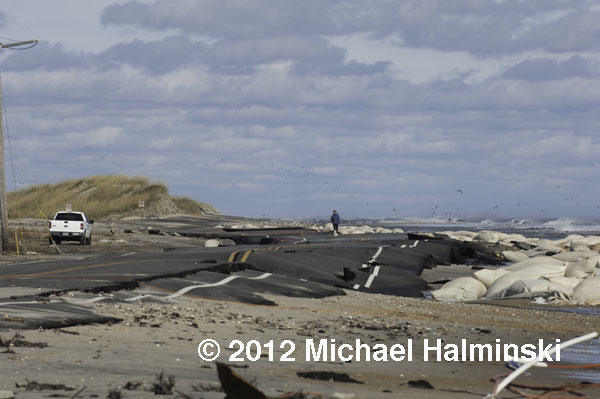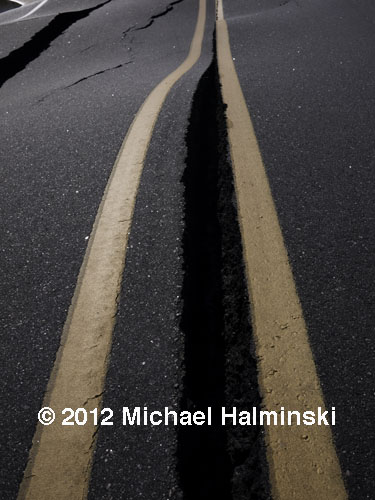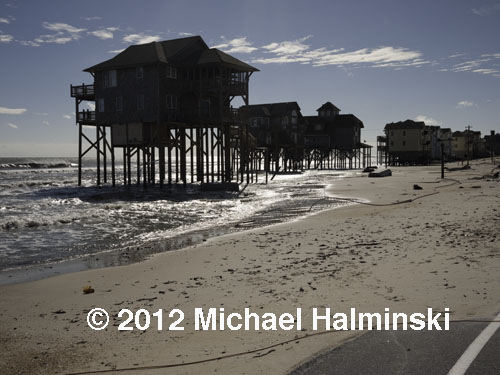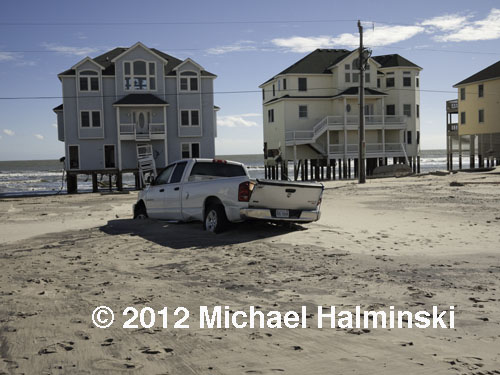Christmas is unlike any other time of the year here. I’m often torn between traveling to see my family or staying home on Hatteras, to enjoy the solitude and nature of this wonderful place.
Holiday business was down and other than the dump trucks pummeling highway 12, there was little human activity. I got caught up on everything, sent out greeting cards and finished a small photography job.
With some time on my hands, I decided to stay on the island, relax and look for things to photograph.
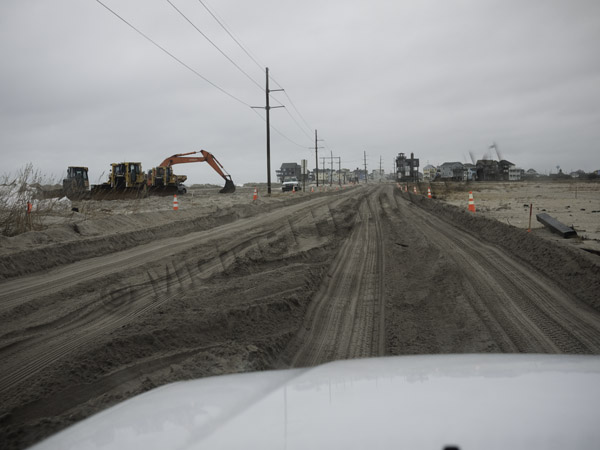
One of the last times I used the 4×4 section of highway 12, I took a shot to record the moment.
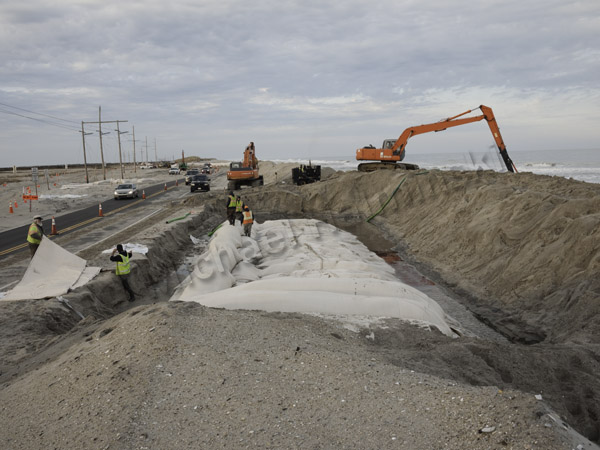
With new pavement in place, workers were busy installing a barrier of sandbags, in hopes of protecting the highway. Seas have since washed over it, and sand is constantly being trucked in, to maintain a beach buffer.
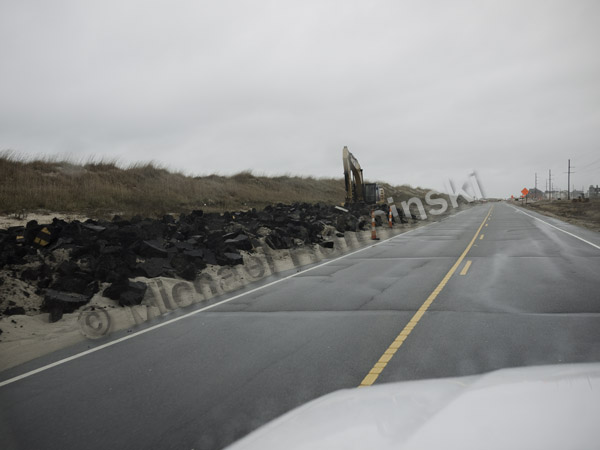
Asphalt rubble from the old road was stockpiled, until it could be taken away.
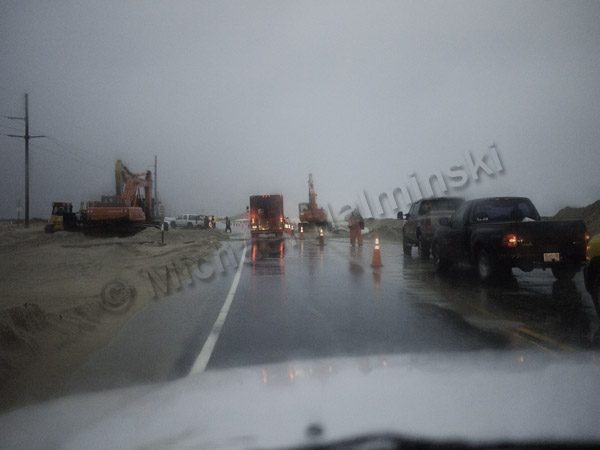
To allow for construction, the S-Curve has been open to one lane traffic only. During the holidays, this was the view heading north.
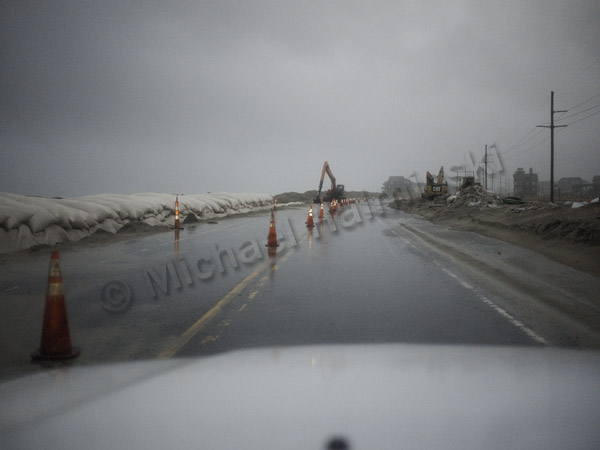
The view looking south didn’t look any more promising.
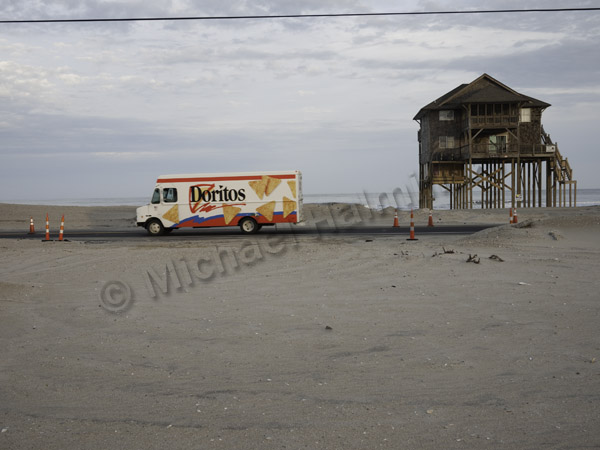
As long as the road is passable, we can receive essential supplies.

The “corridor” just south of Oregon Inlet has also been an ongoing battle. Heavy equipment removes sand blown onto the road, only to have it blown right back. One could hardly find a better example of a vicious cycle.

It was predicted that the world was ending on December 21st. I celebrated by driving out to Cape Point during a gale. I was all alone to enjoy the place completely enveloped by nature.

Leaving my truck in the distance, I walked out to the point.

The wind and waves coming together, gave me a spectacular show.
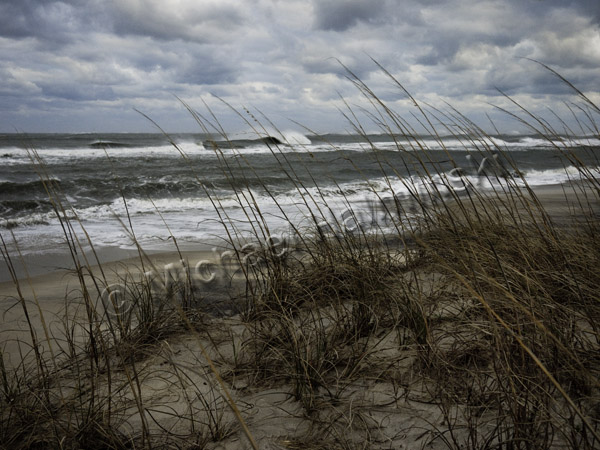
Surfers were calling this “The Doomsday Swell”.

The most interesting spot was right on the point looking east. This is where two powerful forces meet. The south bound Labrador Current collides with the north bound Gulf Stream. Due to seas washing over the beach, I had to walk a quarter mile with a rising tide, to access the point.

One nice thing about coastal storms is experiencing the aftermath of clearing weather.

Rainbows are common yet elusive.

On January 5th, the Old Christmas celebration in Rodanthe marked the end of our holiday season. Larry Midgett joined me in bidding adieu to Old Buck, led by John Edgar.
As caretaker, John Edgar will put Old Buck out to pasture until next year.




